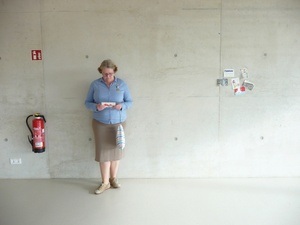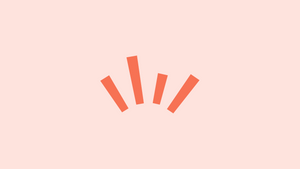Premiere Deutsches Kunstmuseum Köln · Theaterprojekt von Christof Breidenich, Anja Kolacek und Marc Leßle
In the organizer's words:
The German Art Museum Cologne in the Otto & Lange Quarter in Cologne-Deutz/Mülheim is a place where theater, art, history and the present enter into a lively dialogue. Regular public theatrical interventions are offered through the museum, giving visitors an in-depth insight into the exhibited works. The production is aimed at different target groups, including families, school classes and adults. Private events can be booked individually and offer the opportunity to explore specific interests in greater depth.
The focus is on outstanding works of fine art from the 19th century through classical modernism to the avant-gardes of the 20th century. Visitors can expect a multi-layered journey through two centuries of artistic creation, which not only traces aesthetic developments, but also makes social, political and cultural upheavals visible. The museum sees itself as an open space for education, reflection and encounters in the context of the special atmosphere of its location - the former industrial halls of the Otto & Langen site. It combines historical industrial architecture with contemporary museum use. The result is an exciting place that unites tradition and transformation.
Places, spaces and objects of the Otto & Langen quarter are marked and contextualized as part of the research into artistic aesthetics. The focus is on the interface between the historical significance of the area and the aesthetic potential of artistic works of the avant-garde and post-war modernism. Works of art and artistic positions from the second half of the 20th century show, on the one hand, a departure from traditional forms of work such as panel painting, sculpture or plastic, and, on the other, a turn towards situationist installations and actionist performances. The result is an aesthetic of the everyday that artistically incorporates life in all its facets - an approach that is taken up and further developed at the DKMK.
The themes that artists have been exploring aesthetically since the 1950s - such as global networking, transformation, archiving, systems of order, social values and individual destinies - can also be found in the historical layers of the industrial site. Through their structural traces, the partly ruinous environments tell of everyday working life, organization, upheaval and decay through vacancy.
The aesthetic parallel performance of theater, art and location opens up a special perspective for visitors: the performance not only provokes a new way of seeing, but also heightens awareness of the historical and social dimensions of the location. The assertion that something is art becomes the starting point of a cognitive process that combines aesthetic experience and historical reflection. This opens up a double space of experience for the recipients - a reflected understanding of art in dialog with the aura of an extraordinary historical site.
The German Art Museum Cologne is also an initiative to draw attention to the desolate state of Cologne's museums. The following summary from the KSA of 15.7.2025:
The Museum of East Asian Art Cologne is waiting for its renovation and does not know whether the exhibition operations can be maintained until then.Source: Kölner Stadt-Anzeiger Kultur im Wartestand - So steht es um die Kölner Museen, 15.07.2025
Since the end of 2018, the Roman-Germanic Museum (RGM ) has no longer been exhibiting in the building at the World Heritage Cathedral. The city had to close the RGM because it had not renovated the listed building from 1974 in time, even though the need had been known for more than a decade. 169.3 million euros are planned for the renovation. Construction is due to begin in 2026 and the exhibition is scheduled to reopen in 2029. The RGM only opened temporarily in the renovated Belgian House at the end of 2019.
Museum Ludwig: In 2021, the administration drew up a cost overview of conceivable renovation scenarios and what they could cost. According to this, the most expensive option would cost 1.1 billion euros, the cheapest 780 million euros. This is an initial rough estimate.
From September 2026, the Wallraf-Richartz Museum will be completely closed from 2001 for the general refurbishment, with the reopening scheduled for mid-2028 to coincide with the completion of the Wallraf extension. The renovation is estimated to cost 29 million euros, while the current extension will cost 129.7 million euros.
Originally, the KSM - Cologne City Museum - was to move into a new building. However, the Hohe Domkirche canceled the major "Historische Mitte" construction project a year and a half ago for financial reasons. Since March 2024, the KSM has been exhibiting in the converted former Sauer fashion house in the city center because the listed Zeughaus, built between 1594 and 1606, was no longer usable from 2017 due to water damage.
MiQua and the Jewish Museum: the museum is due to open in mid-2028, originally it was supposed to open in 2019. And instead of 190 million euros, 51.8 million euros were once budgeted.
At the MAKK, Museum für Anewandte Kunst Köln, 31.5 million euros were earmarked for refurbishment, now a total of 71 million euros will be spent by 2029. The historical collection has been closed for years.
This content has been machine translated.
Price information:
Fee: €16 / €8 reduced Limited number of participants, pre-registration recommended: info@raum13.com














